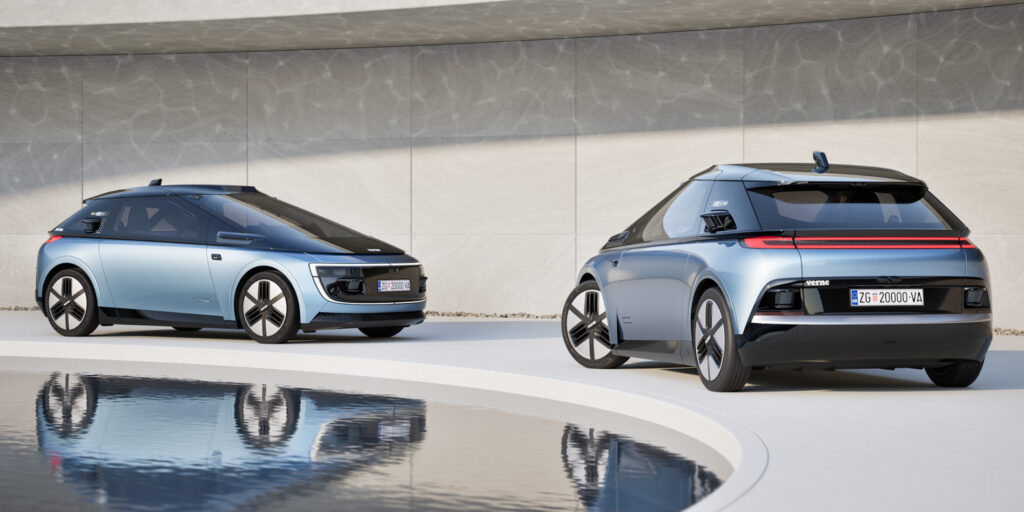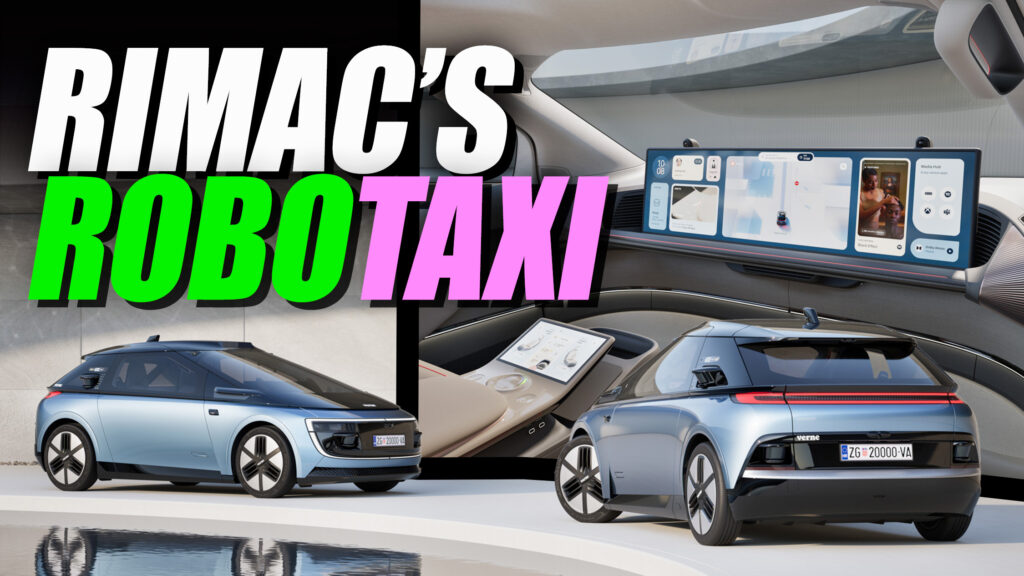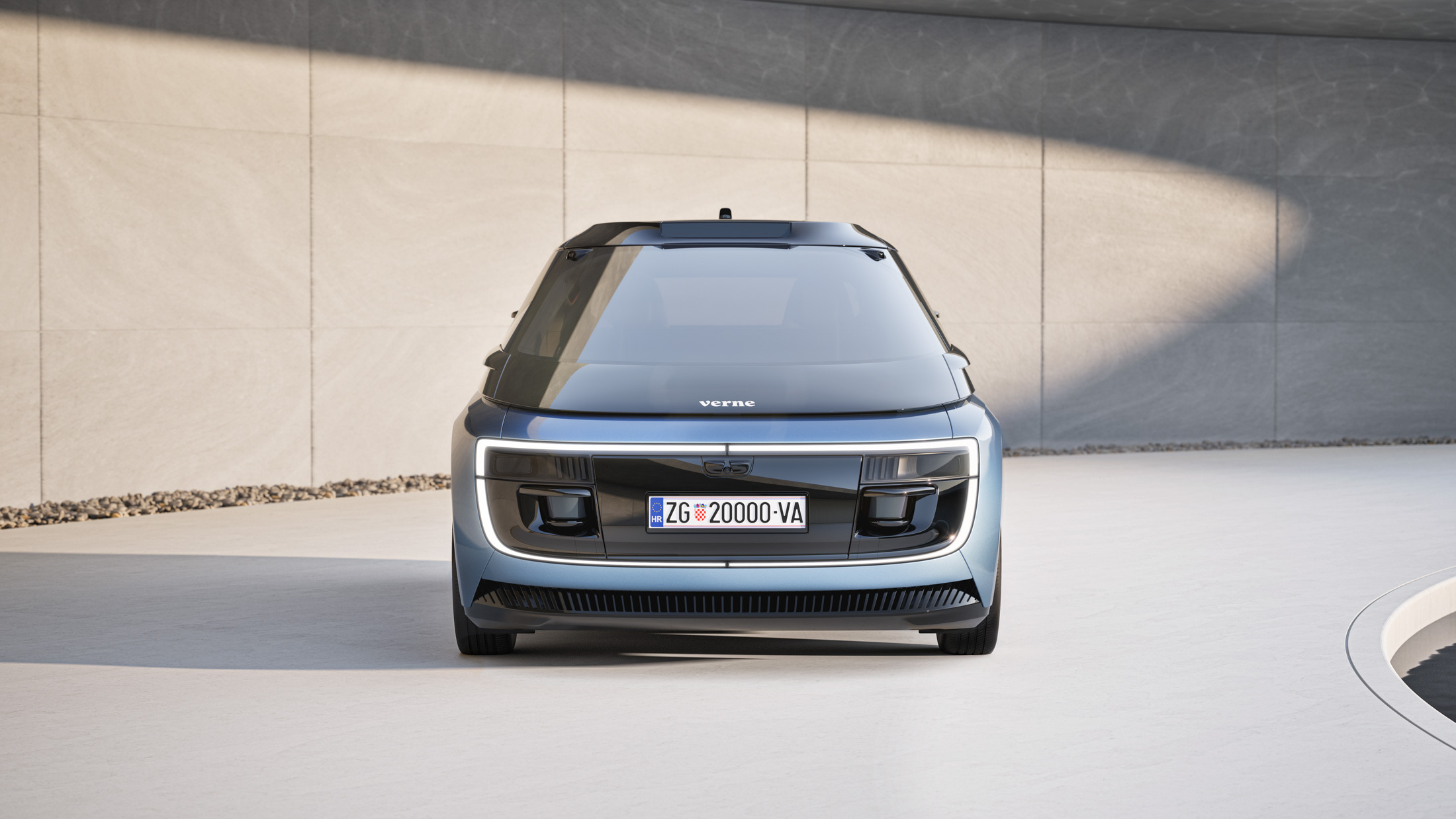- Electric supercar-maker Rimac has unveiled its Verne robotaxi.
- The driverless pods only have two seats because research showed most cab rides involved one or two passengers.
- The first service starts running in Zagreb, Croatia, in 2026, but 11 more cities around the world to follow.
Mate Rimac has already turned the supercar world on its head with the record-setting, ICE-humbling electric Nevera, and now he wants to do the same with cabs. His new Verne robotaxi isn’t targeting a world-beating quarter-mile time, but with only two seats and a coupe-style body it certainly looks sportier than anything from Cruise or Waymo.
Unlike Waymo’s adapted Jaguar I-Pace SUVs and Cruise’s Chevy Volts, Verne’s car is brand new, meaning it was designed to be driverless from the get-go. It’s why Rimac subsidiary Verne – named after sci-fi author Jules – was able to design its taxi with just two seats, which sounded like a mistake to us, though the firm’s research says otherwise. It claims that nine out of 10 taxi rides involve only one or two passengers.
Related: Tesla RoboTaxi To Debut August 8
Riders hail the cab with an app, and can use controls on their smartphone to pre-set the ambient lighting, temperature and even scent (unless the previous rider, fresh from a bar crawl, has left their own) before the taxi has arrived. When it does pull up they enter the “Rolls Royce-sized” cabin through sliding doors, dropping into reclining seats that are designed to make passengers feel like they’re in a living room, not a car.
No wheel, no wipers
There’s no steering wheel to obstruct the huge 43-inch screen, which offers entertainment as well as information about the journey, and 17 speakers are on-hand to blast your favorite tunes. A touchpad between the seats controls the car settings, and there’s also something called the Median, which Rimac says lets riders start and stop the ride so they feel like they have some control.
A circular glass halo ring cut into the headliner is an interesting take on a panoramic sunroof and the cabin materials are claimed to be designed to withstand the use and abuse these kinds of vehicles get, while still feeling “inviting, premium and cozy.” Whether rider will still feel cozy when they’re being driven along the freeway and can’t see a thing through the windshield due to driving rain, remains to be seen – there are no windshield wipers.
Flexible platform
No details about the technical spec, motor output, battery size and range have been released, but the firm did reveal that the platform is scalable and can be adapted for use on different road types. And it claims that the Mobileye autonomous package of cameras, radar and Lidar can even accommodate local driving styles, presumably enabling the service to be rolled out to countries where the road rules are only optional.

Verne is a new company set up by Mate Rimac and two friends from Rimac Group, Marko Pejković, Verne’s CEO, and Nevara designer Adriano Mudri, now Chief Design Officer at the taxi business. And the car is no mere concept that might only make it to the street if Mate rustles up billions of dollars of investment.
The first service launches in Rimac’s home city of Zagreb, Croatia, where the taxis will be built, in 2026, with 11 more cities in the UK, Germany, the rest of Europe and the Middle East already signed up. Thirty more cities around the world are also talking to the Verne team about getting their hands on the autonomous cabs, which the firm says will complement public transport rather than compete with it.
Cruise’s well-publicized safety blunders have given robotaxis a bad name over the past year, but with Verne now unveiling its entry and Tesla poised to debut an autonomous taxi in August, the sector’s future looks much brighter. It also looks bright for the Rimac Group, whose Nevera has struggled to find buyers. Who else can’t wait to see a dragstrip shootout between one of these and the Tesla-cab?





















